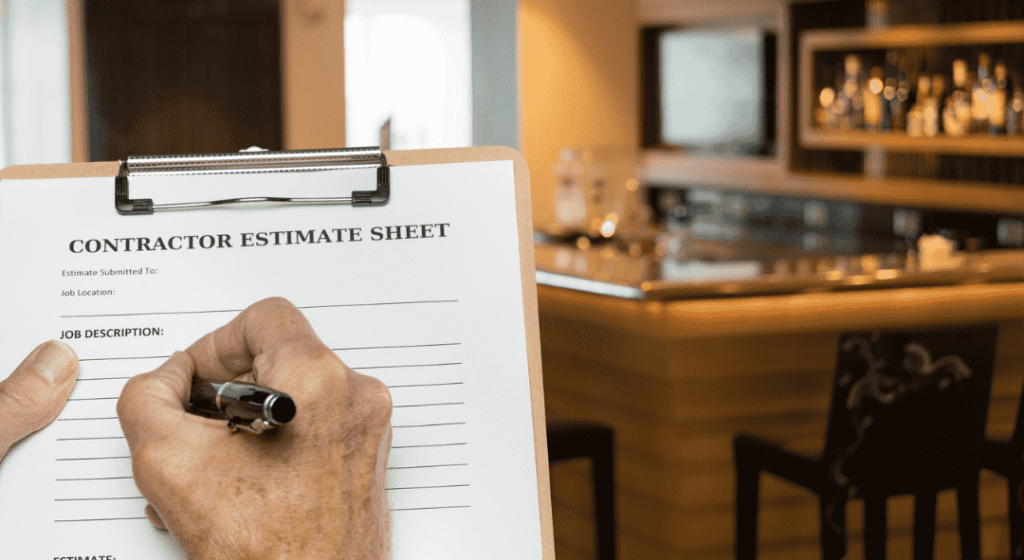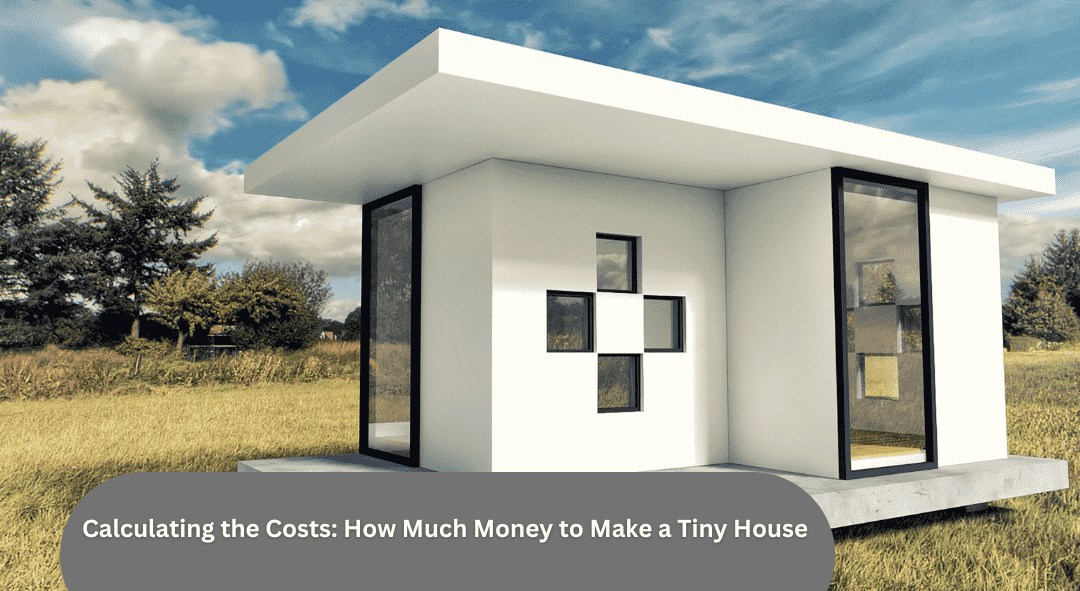As the trend toward minimalism and sustainable living continues to gain momentum, tiny houses have emerged as a popular housing option for many individuals and families. These compact dwellings offer an affordable and environmentally friendly alternative to traditional homes, providing all the necessities in a smaller footprint. However, one common question among prospective tiny house builders is: How much money does it take to build a tiny house? In this article, we’ll explore the costs associated with constructing a tiny house and how material takeoff services, including drywall takeoff, can help in accurate budgeting and planning.
Understanding the Costs of Building a Tiny House:
Building a tiny house involves various costs, including materials, labor, permits, and utilities. While the overall cost can vary depending on factors such as size, location, and design complexity, here’s a breakdown of the typical expenses involved:
Materials:
Lumber: Lumber is one of the primary materials used in constructing the frame, walls, and roof of a tiny house. The cost of lumber can vary based on factors such as the type of wood, grade, and market demand.
Insulation: Insulation is crucial for regulating temperature and energy efficiency in a tiny house. Common insulation materials include fiberglass, foam board, and spray foam. The cost of insulation depends on the type and R-value required for the climate.
Roofing Materials: Roofing materials such as shingles, metal panels, or roofing membranes protect the tiny house from the elements. The cost varies depending on the material chosen and the size and complexity of the roof.
Windows and Doors: Quality windows and doors provide natural light, ventilation, and security. The cost of windows and doors depends on factors like size, style, and energy efficiency ratings.
Flooring: Flooring options range from hardwood and laminate to tile and vinyl. The cost varies based on the material chosen and the square footage of the tiny house.
Siding: Siding not only enhances the aesthetic appeal but also protects the exterior of the tiny house from weather damage. Common siding materials include vinyl, wood, metal, and fiber cement, each with its own cost considerations.
Fixtures: Fixtures such as faucets, sinks, toilets, and lighting fixtures contribute to the functionality and comfort of the tiny house. The cost depends on the quality and brand of the fixtures selected.
Specialized Materials: Additional features like solar panels, composting toilets, or off-grid systems can add to the overall cost but may provide long-term savings on utility bills and environmental benefits.
2. Labor:
Contractors/Builders: Hiring professional contractors or builders to construct the tiny house will incur labor costs. Labor rates vary depending on the location, experience level, and scope of work involved. Some contractors may charge a flat fee for the entire project, while others may bill by the hour or by specific tasks.
DIY Construction: Many tiny house enthusiasts opt to build their homes themselves to save on labor expenses. While DIY construction can be cost-effective, it requires time, effort, and a certain level of construction skills. DIY builders may need to invest in tools, equipment, and educational resources to complete the project successfully.
3. Permits and Fees:
Building Permits: Obtaining building permits is essential for legal construction and ensures that the tiny house complies with local building codes and regulations. Permit fees vary depending on the jurisdiction and the scope of the project. Additional fees may apply for plan reviews, inspections, and zoning approvals.
4. Utilities:
Electricity: Connecting the tiny house to the electrical grid or installing an off-grid solar power system incurs costs for equipment, installation, and wiring. Energy-efficient appliances and lighting can help reduce electricity consumption and long-term utility bills.
Water: Accessing municipal water supply or installing a well or rainwater harvesting system involves upfront costs for equipment, plumbing, and permits. Water-saving fixtures and greywater recycling systems can help minimize water usage.
Sewage: Installing a septic system or connecting to a municipal sewage system requires permits and excavation costs. Composting toilets or RV-style waste disposal systems offer alternative solutions with lower installation and maintenance expenses.
5. Land:
Location: Land prices vary widely depending on factors such as location, proximity to urban areas, accessibility, zoning regulations, and amenities. Rural or remote properties may offer lower land prices but may require additional infrastructure investments for utilities and access.
Size: The size of the land plot needed for a tiny house depends on factors such as local zoning regulations, site suitability, and desired outdoor living space. Smaller lots may be more affordable but may have restrictions on building size or placement.
Zoning Regulations: Check local zoning ordinances and building codes to ensure compliance with land use regulations. Some areas may have specific restrictions or requirements for tiny house construction, such as minimum lot sizes, setback requirements, or permit limitations.
By carefully considering and budgeting for each of these cost categories, individuals can develop a comprehensive understanding of the financial investment required to build a tiny house. Conducting thorough research, obtaining multiple quotes, and exploring cost-saving strategies can help ensure that the project stays within budget while meeting the desired quality and specifications.

The Role of Material Takeoff Services
Material takeoff services play a crucial role in accurately estimating the materials needed for a construction project, including tiny houses. By utilizing specialized software and expertise, material takeoff services provide detailed lists of required materials based on architectural plans and specifications. This helps builders and homeowners budget more effectively and avoid unnecessary expenses.
Drywall Takeoff for Tiny Houses
Drywall is a key component of any residential construction, including tiny houses. Estimating the amount of drywall needed for a tiny house project can be challenging due to the unique dimensions and layout of these compact homes. Drywall takeoff services utilize advanced technology to calculate precise quantities of drywall sheets, joint compound, and fasteners required for the project. This ensures that builders purchase the correct amount of drywall materials, minimizing waste and cost overruns.
Tips for Budgeting and Cost-Saving Strategies
While building a tiny house can be an affordable alternative to traditional housing, it’s essential to budget wisely and explore cost-saving strategies. Here are some tips to help you manage your tiny house budget effectively:
Plan and Research: Take the time to research different construction methods, materials, and suppliers. Planning ahead and obtaining multiple quotes can help you find the best value for your budget.
DIY vs. Hiring: Consider your skills and available time when deciding whether to build your tiny house yourself or hire professionals. While DIY construction can save on labor costs, it requires dedication and willingness to learn new skills.
Optimize Space: Maximize the use of space in your tiny house design to minimize the need for excess materials. Consider multifunctional furniture, built-in storage solutions, and innovative space-saving techniques.
Prioritize Energy Efficiency: Investing in energy-efficient appliances, insulation, and windows can help reduce long-term utility costs. Explore renewable energy options such as solar power to further minimize energy expenses.
Be Flexible: Be prepared to make compromises and adjustments to your plans to stay within budget. Prioritize essential features and amenities while being willing to forego unnecessary luxuries.

Conclusion
Building a tiny house is a rewarding endeavor that offers financial freedom, sustainability, and a simpler way of life. By understanding the costs involved and leveraging tools such as material takeoff services and drywall takeoff, you can plan and budget effectively for your tiny house project. Whether you’re embarking on a DIY construction journey or working with professionals, careful planning and cost-saving strategies can help you achieve your dream of living in a cozy and efficient tiny home. At Apex Accuracy Estimating Inc., we’re committed to helping homeowners and builders make informed decisions and achieve success in their construction projects.
#TinyHouseCosts #ConstructionMaterials #LaborCosts #BuildingPermits #UtilityCosts #LandExpenses #TinyHouseLiving #BudgetingTips #DIYConstruction #SustainableLiving #HomeBuilding #BuildingMaterials #TinyHouseDesign #ConstructionBudget #PermittingProcess

